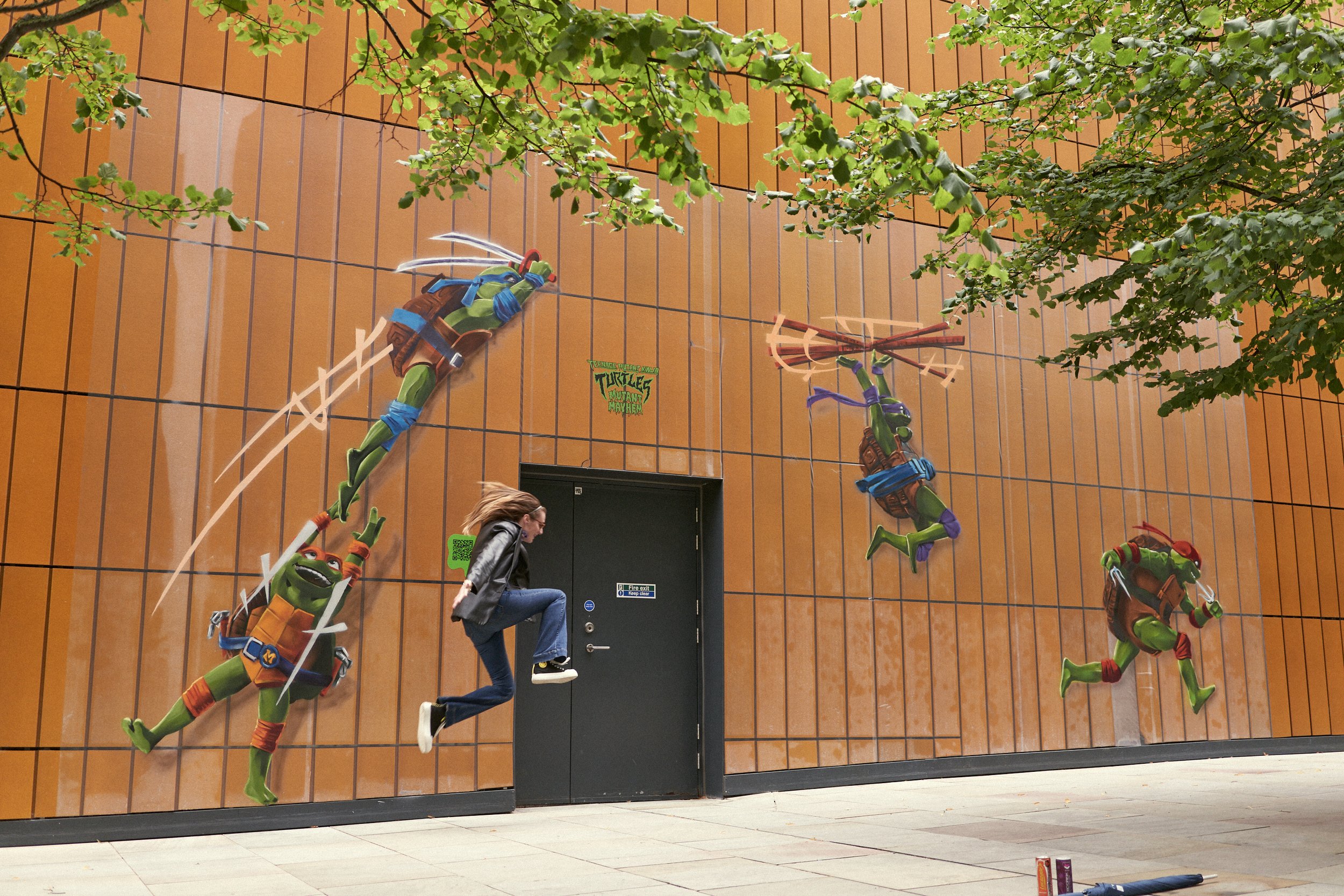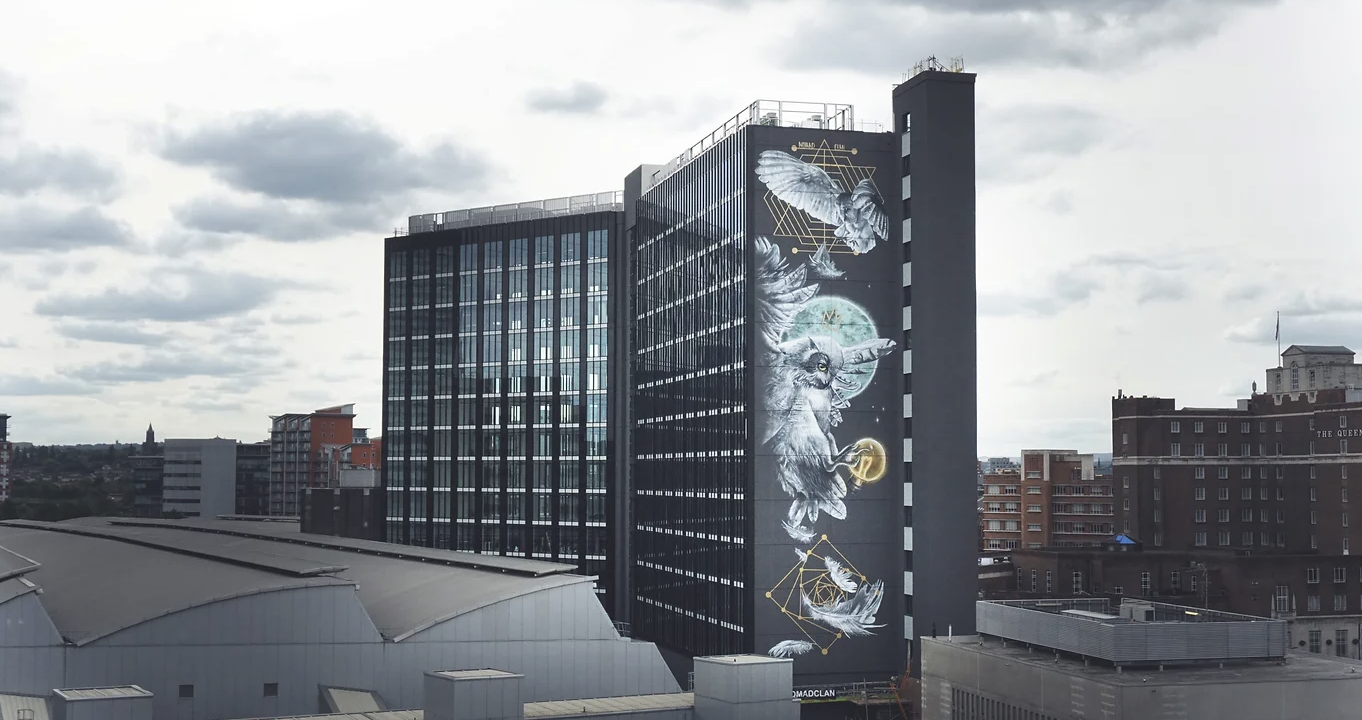the psychology of street art
an epic piece from David ‘meggs’ hooke
Street art is a unique form of expression that has become increasingly popular over the years. It can often wrongly be placed under the same umbrella as graffiti which has a universally shared negative stigma attached to it, with connotations of vandalism and anti-social behaviour. despite both being legitimate art forms in their own right, Street art, however, is a way to express emotions, ideas and beliefs.
It can also serve to extract emotion from those that see it.
But why is it that the public are so drawn to it? Why are people taking moments out of their busy city lives to stop and take pictures of urban art in the wild? What makes it such an effective form of out of home advertising? And how does it make people feel?
Firstly, people are drawn to street art because it’s unexpected. It can pop up anywhere at any time and this unpredictability can be exciting. Even the process of producing street art is a spectacle which builds intrigue and excitement. The congregation of a team of artists, the construction of a scaffolding tower, the priming of walls, these are all seemingly dull occurrences which make a daily commuter’s journey all that more interesting. Especially when they get to witness a mural being painted.
amazing work from kenji chai taken at bsa fest
Street art is widely accepted across cities from all around the world and is seen as a positive thing. It can make people feel inspired, empowered and connected to their community. When people see a beautiful piece of art, it can brighten their day and lift their mood. It’s also a form of art that’s accessible to everyone, regardless of their background or education. This inclusivity is something that’s not always found in other art forms, which can be elitist and exclusive.
the public interacting with our recent Teenage mutant ninja turtles street art trail in manchester
In terms of its effectiveness as a marketing tool, street art is far more engaging than billboards. one key component of murals and street art that makes them a stand out form of marketing is that behind the creation of the advertisement, there isn’t just a machine. there is a person. A person with a paint brush and/or can of spray paint, a mind filled with creative ideas and multiple years of artistry behind them. Hand-painted ads are interactive and people involuntarily engage with them in different ways. In awe of the art in front of them they can’t help but take photos of it, share it on social media, and even discuss it with their friends and family. This can lead to an even wider audience for brands, which is something that traditional billboards can’t really compete with in the same way.
by liam bononi in manchester, UK
‘Athena rising’ by nomad clan in leeds, uk
Artists using urban settings as blank canvases is becoming an important part of our cultural landscape and there is just so much scope for it. Crowded, busy cities can feel overwhelming sometimes and street art is something which diffuses these intense feelings and converts them into a much more pleasant state of being. Even if just for a second.
So next time you walk past a wall being painted, or even a finished mural. Take a moment to stop, stare and admire the craft. It might just improve your day.








